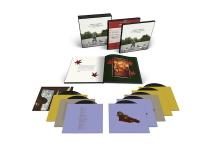As someone who has spent 5 decades purchasing around 30 different issues of this LP in trying to find the most revealing, most engaging, least distorted, and least muddy issues of Mr. Harrison's masterpiece, I would offer the following suggestions:
Vinyl - the original 1970 German pressing of the box. Catalog No. 1C 172-04 707/8/9
This is the clearest vinyl pressing available, overall. It has some well-defined bass, some transparent midrange, and some extension on top.
CD/digital - the second Japanese CD issue of the LP. Catalog No. CP28-5459-60
This has the best sound of any CD, with the arguable exception of the 2000 reissue that George oversaw. It has more clarity and transparency than any other CD. I have very serious doubts that the 2000 reissue is a straight copy of the master tape; there are many aspects about it - attractive as they are - that sound notably different than any other issue, before and after.
On vinyl the RSD issue and the pressing that followed it 3 years later are very good.
Ken Hoffman produced a mastering in 2000 for DCC release at the request of DCC and the Harrison Estate. The project was terminated after Hoffman finished his work. It is easily THE reference for ATMP - it doesn't turn the recording into an audiophile treat, but it succeeds at all of the aspects that are such a disappointment in the new issue.













